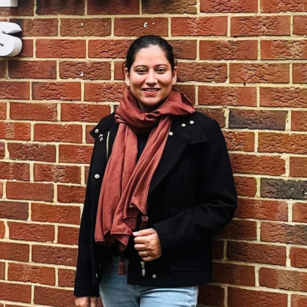The last ten years has seen a rapid expansion of the use of participatory video by those working across the international development sector. Whilst it has much to offer, great care needs to be taken with regards to the context, ethics and application of this methodology for it to achieve its potential to drive social change. A new IDS course, Participatory Video Processes: building inclusive engagement and community-led change, will explore both the possibilities and how to navigate the challenges and risks in reality.
Participatory video (PV) is an interactive group process, generally facilitated by a practitioner, which is mediated by video recording and playback. Practitioners and researchers have been enthusiastic about using PV to engage people in marginalised communities and to generate ground-level insights on social issues.
Group stories and narratives can convey people’s day-to-day realities to policymakers (in a way that data or statistics can’t), with the intention of influencing their decision-making. This is particularly important for the most disadvantaged or excluded people whose perspectives are absent or neglected in policy processes. Visual techniques such as video can also serve as a way of deepening understanding of policy makers and engaging them in exchange with community participants.
However, when used predominately as a tool for participant advocacy, PV can be problematic. The complex and longer-term processes intrinsic to PV can be lost if it becomes oversimplified and shortened. This can result in decision-makers watching videos and then ticking boxes to say they have consulted with people, with little happening as a result. Furthermore, even when the learning process is prioritised, there are always practical challenges and ethical risks such as project ‘take-over’ by the most powerful local actors, or the risk of inappropriate exposure for vulnerable groups.
So what should participatory video be about and how can it be used in the best possible way?
Most importantly is should not be seen simply as a production approach with a set of steps to follow. It is not a singular methodology and there are diverse approaches. While there is a common thread involving iterative cycles of recording and reflective dialogue, the specific activities will differ depending on what is appropriate for each context.
Fundamentally it is a way of mediating communication processes towards more equitable relations and community-led change: by motivating participation, building communication capacity and inclusive relationships, and driving community action. Indeed, the main value of PV often lies not in the video outputs themselves, but the discussions generated by the activity and what is revealed about the dynamics and relationships between people and across communities.
The use of PV is hence a complex, dynamic and interactional process, with the technology itself applied to support the social and political aims. There needs to be consideration of the risks and tensions of real life practice, careful thinking through of ethical questions such as the politics of public exposure, and sensitive attention to power dynamics amongst those taking part.
In recent years a more nuanced understanding of both the possibilities and risks of PV practice have been developed by a number of people. My own work, along with that of other Participation Cluster colleagues, has revealed much about how ethical issues can be negotiated more effectively in practice. We are aware however that training that addresses these real-life tensions and trade-offs, or covers the longer-term iterative processes that we advocate, is very limited.
We are hence running a specialised five day course, which will take place here at IDS from 11-15th September. Run by myself and Clive Robertson it will look holistically at PV processes and practice, covering both the methodological aspects of PV, and delving deep into the associated contextual processes and issues raised here. Whether you are new to PV, or already a PV practitioner, we warmly invite you to attend. This course is limited to a maximum of 10 participants to ensure plenty of hands on practice as well as quality of teaching and learning.
For further information and application form please visit our website or contact our course administrator Richard Douglass.
